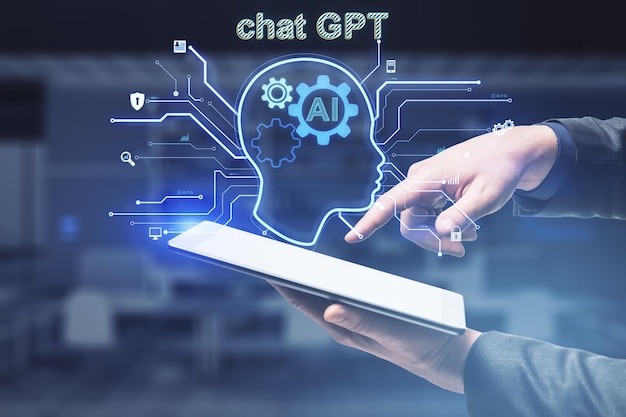The landscape of artificial intelligence is in constant flux, with each new iteration pushing the boundaries of what’s possible. A question that resonates deeply within the developer community is: What is GPT-4.1 in the API, and how does it elevate the capabilities offered by previous large language models? The answer lies in a significant leap forward in performance, context understanding, and efficiency, marking a pivotal moment for building intelligent applications. OpenAI’s introduction of GPT-4.1 in the API, alongside its nimble siblings GPT-4.1 Mini and the ultra-fast GPT-4.1 Nano, signifies a powerful toolkit now available for developers to craft the next generation of AI-driven solutions. This comprehensive exploration will delve into the features, benefits, use cases, and integration of this groundbreaking technology, providing insights for tech leads, product managers, and developers eager to harness its potential.

Unpacking the Powerhouse: Features of GPT-4.1 in the API
GPT-4.1 in the API represents a substantial evolution, building upon the already impressive foundation of the GPT-4 architecture, including the recently unveiled GPT-4o. While not yet accessible through the standard ChatGPT interface, its availability via the API unlocks a new tier of capabilities for custom AI integrations.
One of the most significant advancements is the enhanced performance across a range of tasks. GPT-4.1 in the API OpenAI specifically highlights notable improvements in coding proficiency and the ability to meticulously follow complex instructions. Benchmarks have reportedly shown GPT-4.1 outperforming its predecessors, including GPT-4o and even internal evaluations of GPT-4.5, particularly in challenging coding scenarios like those presented in the SWE-bench evaluation. This suggests a more reliable and accurate model for code generation, debugging, and understanding intricate codebases.
A game-changing feature of the entire GPT-4.1 family is the expanded context window of 1 million tokens. This massive increase from GPT-4’s 128K token limit allows developers to feed the model significantly larger amounts of information, including extensive documents, entire code repositories, and lengthy conversational histories. This expanded context enables more nuanced and contextually aware responses, leading to more sophisticated AI applications.
Crucially, the GPT-4.1 models are engineered for improved long-context comprehension. Simply having a large context window isn’t enough; the model needs to effectively utilize that information. OpenAI claims that GPT-4.1 demonstrates a better ability to retain and process information throughout this extended context, mitigating the common issue of information loss in the middle of long sequences. This enhanced comprehension is vital for tasks like summarizing lengthy reports, understanding complex narratives, and working with large-scale code projects.
Reliable instruction following is another key area of improvement. GPT-4.1 is designed to be more steadfast in adhering to intricate instructions, including multi-step directives, specific formatting requirements, and nuanced stylistic guidelines. This enhanced reliability translates to more predictable and controllable AI behavior, a critical factor for building robust and dependable applications.
For developers, the coding enhancements within GPT-4.1 are particularly compelling. Beyond general code generation, the model excels at tasks like generating precise code diffs, highlighting the exact changes between code versions. It also demonstrates a reduced tendency to introduce extraneous edits, resulting in cleaner and more focused code outputs. Furthermore, GPT-4.1 shows notable advancements in frontend development capabilities, making it a more versatile tool for full-stack developers.
The introduction of GPT-4.1 Mini and GPT-4.1 Nano provides developers with options tailored for different needs. GPT-4.1 Mini offers a compelling balance of strong performance, often surpassing GPT-4o on intelligence benchmarks, with significantly lower latency and cost. This makes it ideal for applications where speed and budget are key considerations. GPT-4.1 Nano represents the fastest and most cost-effective option within the family, designed for lightweight AI tasks where rapid response times are paramount.
Finally, GPT-4.1 and GPT-4.1 Mini benefit from a refreshed knowledge cutoff date of June 2024. This more up-to-date knowledge base allows these models to provide more current and relevant information compared to older GPT-4 iterations.
The Cascade of Benefits: Why Developers Should Embrace GPT-4.1 in the API
The advancements offered by GPT-4.1 in the API translate into a wealth of benefits for developers across various domains.
Building more reliable and capable AI agents becomes significantly more achievable with GPT-4.1’s enhanced instruction following and long-context comprehension. These improvements enable the creation of agents that can handle more complex tasks, understand intricate user requests, and maintain coherent conversations over extended periods.
Advanced software engineering tasks are revolutionized by GPT-4.1’s superior coding abilities. From intelligent code completion and generation to automated debugging and refactoring, the model can significantly accelerate development workflows, improve code quality, and reduce the burden on engineering teams. The ability to analyze and understand vast codebases within the 1 million token context opens up new possibilities for code analysis and maintenance.
Processing and analyzing large documents and codebases is now far more efficient and insightful. The expanded context window allows GPT-4.1 to digest and understand massive amounts of textual or code data, enabling applications for document summarization, information extraction from extensive reports, and comprehensive code understanding for analysis and security audits.
For applications where low latency and cost-effectiveness are critical, GPT-4.1 Mini and GPT-4.1 Nano provide compelling solutions. Their speed and reduced pricing make them ideal for real-time applications, high-throughput processing, and scenarios where budget constraints are a primary concern without sacrificing significant performance.
The availability of fine-tuning support for GPT-4.1 and GPT-4.1 Mini empowers developers to further customize these models for their specific domain and application requirements. This allows for the creation of highly specialized AI solutions that are even more accurate and effective for niche tasks, GPT-4.1 in the API.
Illuminating the Possibilities: Diverse Use Cases for GPT-4.1 in the API
The enhanced capabilities of GPT-4.1 in the API unlock a wide array of innovative use cases across various industries:
- Advanced AI Assistants: Building virtual assistants that can handle incredibly complex queries, manage long-term projects, and maintain detailed user profiles thanks to the extended context.
- Intelligent Knowledge Management Systems: Creating systems that can ingest, understand, and retrieve information from massive internal knowledge bases, providing employees with instant access to critical data.
- Revolutionary Code Generation and Analysis Tools: Developing IDE integrations that offer unparalleled code completion, intelligent debugging, automated refactoring, and comprehensive code security analysis across entire projects.
- Sophisticated Content Creation Workflows: Building tools that can generate high-quality, long-form content with consistent style and tone, adhering to complex editorial guidelines and incorporating information from extensive source materials.
- Next-Generation Customer Support Platforms: Developing chatbots that can understand and resolve complex customer issues with greater accuracy and empathy, maintaining context across lengthy interactions, and access vast product documentation.
- Cutting-Edge Research and Analysis Applications: Creating tools that can analyze massive datasets, identify trends, and generate insightful reports from scientific literature, financial data, or market research.
- Personalized Education Platforms: Building adaptive learning systems that can understand individual student needs based on their entire learning history and provide tailored feedback and resources.
Integrating the Future: Getting Started with GPT-4.1 in the API
Integrating GPT-4.1 in the API follows a similar process to working with other OpenAI models, but developers should be mindful of the new context window limits and pricing structures.
- API Key: Ensure you have a valid OpenAI API key.
- API Client: Utilize your preferred programming language and the OpenAI API client library (e.g.,
openaifor Python). - Model Selection: Specify the desired GPT-4.1 in the API model (
gpt-4.1,gpt-4.1-mini, orgpt-4.1-nano) in your API requests. - Context Management: When working with the 1 million token context window, implement efficient strategies for managing and passing large amounts of data to the model. This might involve techniques like document chunking or intelligent context selection.
- Prompt Engineering: Craft clear and detailed prompts that leverage the model’s enhanced instruction-following capabilities. For complex tasks, break down instructions into logical steps.
- Testing and Evaluation: Thoroughly test your integrations to ensure the model is performing as expected with the extended context and complex instructions. Monitor token usage carefully due to the potentially higher costs associated with larger context windows.
- Pricing Awareness: Familiarize yourself with the pricing tiers for each GPT-4.1 in the API model, as input and output tokens are priced differently. Optimize your prompts and context usage to manage costs effectively.
Navigating the Nuances: Frequently Asked Questions
Q: Is GPT-4.1 available in the standard ChatGPT interface?
A: No, as of the current information, GPT-4.1 in the API and its variants are exclusively available through the OpenAI API for developers.
Q: What is the context window size for each GPT-4.1 model?
A: All three models – GPT-4.1, GPT-4.1 Mini, and GPT-4.1 Nano – support a 1 million token context window.
Q: How does the pricing of GPT-4.1 compare to previous GPT-4 models?
A: Pricing varies depending on the specific GPT-4.1 model. Generally, the standard GPT-4.1 model may have a different pricing structure than GPT-4o, while GPT-4.1 Mini and GPT-4.1 Nano are designed to be more cost-effective. Refer to the OpenAI API pricing page for detailed information.
Q: Can I fine-tune GPT-4.1?
A: Yes, OpenAI has announced fine-tuning support for GPT-4.1 and GPT-4.1 Mini.
Q: When was the knowledge cutoff for the GPT-4.1 models?
A: The knowledge cutoff date for the GPT-4.1 family is June 2024.
Q: Which GPT-4.1 model should I choose for my application?
A: The choice depends on your specific needs. GPT-4.1 offers the highest overall performance. GPT-4.1 Mini provides a strong balance of performance, speed, and cost. GPT-4.1 Nano is ideal for fast and cost-effective lightweight tasks.
Embracing the Future of AI Development with GPT-4.1
The introduction of GPT-4.1 in the API marks a significant leap forward in the capabilities available to AI developers. GPT-4.1 in the API enhanced performance, massive context window, improved instruction following, and specialized coding abilities unlock a new realm of possibilities for building intelligent applications. Whether you are a seasoned developer, a visionary tech lead, or a strategic product manager, understanding and leveraging the power of GPT-4.1 is crucial for staying at the forefront of innovation. As you embark on your journey with this groundbreaking technology, consider the transformative potential it holds for your projects and the exciting future it heralds for the world of AI-driven solutions. Explore the API, experiment with its capabilities, and unlock the next generation of intelligent applications.

